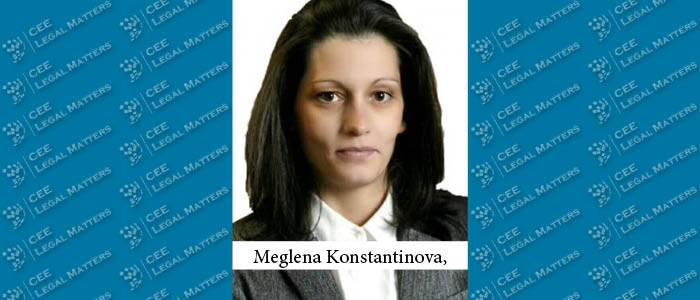Three years after its launch, e-Justice in Bulgaria is still under construction and improvement and has not yet reached its final form.
At the end of March 2023, the unified platform of e-Justice – the optimised Unified Portal for e-Justice (UPEJ) – started working. Prior to that, the pilot programme of the Unified Information System of the Courts (UISC), which was the forerunner of the actual UPEJ, operated for more than 3 years.
The optimised UPEJ is a single electronic database of court cases considered by all regional, district, administrative, military, appellate, and Supreme Courts in the Republic of Bulgaria. However, the transition was not announced anywhere in advance and legal practitioners were not prepared for the new version of UPEJ. Immediately after the launch, it became clear that the optimised UPEJ was available under different conditions than the test platform. Registered access to UPEJ is provided by the user through a qualified certificate for a qualified electronic signature for an individual. In practice, the possibility of accessing UPEJ with a name and password has been removed.
In the first few months of operation of the optimised UPEJ, absurd situations have arisen. For example, an administrative court ordered that applications for access to electronic files submitted to the court on paper or by e-mail should not be processed because, according to the “User’s Guide”, the creation of user-profiles and the application for access to court files should only be made through the UPEJ. At the same time, the same court had ruled that, due to the breakdown in electronic communication between the court’s Case Management Information System and the optimised UPEJ, applications for access to cases submitted through the UPEJ could not be considered by the court. As a result, the court denied electronic access to parties and their counsel for several weeks.
A positive trend in the development of e-Justice since 2023 is the increasing number of electronic services available in the optimised UPEJ, as well as the integration between individual information systems. There are more and more courts that offer the possibility of initiating court cases through the UPEJ, filing documents on initiated court cases through the UPEJ, serving documents electronically, making electronic payments through a virtual POS terminal, etc.
In addition, another important innovation was launched at the end of October 2023 – the UPEJ eCase mobile application. The mobile application allows any user with a registered profile in the UPEJ to access all court cases with free public access, cases with personal participation, view all attached electronic documents, receive electronic court documents, etc. The eCase application can be downloaded free of charge from the App Store and Google Play.
More than half a year after the launch of the optimised UPEJ, serious shortcomings remain.
Common issues when working with the optimised UPEJ are the following:
- Access to electronic court files.
As before 27.03.2023, and now, electronic access to a specific electronic case can be obtained by the parties and their representatives (determined by law or by authorisation) only after their express declaration of will–access application.
The optimised UPEJ allows the person who has a profile to access it in different roles. A distinction is made between individuals (citizens, lawyers, and other persons involved in cases) and legal persons (all persons under Art. 50 and Art. 52 of the Civil Procedure Code – state institutions, banks, insurance companies, utility companies, etc.). A user with a UPEJ profile can view basic information on all court cases with free public access. A user with registered access to a specific file can only consult all the documents contained in the specific electronic case file.
1.1. The time taken to grant access varies between courts and even between different panels of the same court. It varies from 24 hours to days, or even weeks, from the time the application is filed to the time the UPEJ automatically sends an e-mail confirming the authorisation.
1.2.The possibility of submitting documents through the UPEJ, including an application for access to the electronic case file, does not apply to all courts in the country.
1.3.By submitting an application for access to an electronic case file through UPEJ, the applicant agrees to receive court documents and to be notified electronically. The consent to electronic notification is automatically generated just before signing the electronic application and is visualised in the so-called electronic package. On the one hand, the automatic consent indicated is a logical consequence of the access requested, which is the ultimate objective of the electronic system implemented. On the other hand, however, given that the parties to the proceedings who have obtained access to the electronic case file are not yet obliged to do so and can choose whether they wish to be notified electronically, and given that the electronic summons system is not yet fully operational, it is clear that the automatic consent given when applying through the UPEJ seems inconsistent at the current stage of development of e-Justice.
1.4.There is still a discrepancy between the options available to the lawyer in physical and electronic filing. In the UPEJ as it currently operates, a lawyer does not have free access and cannot make inquiries about electronic cases, unless he is expressly granted access to the specific case.
- The electronic environment.
All cases initiated after 1.7.2021 will exist in an electronic environment that is common and uniform for all courts.
In cases initiated after the introduction of electronic justice, orders will no longer be issued manually, but in electronic form by entering them in the EISS, unless this is impossible due to their nature or the law provides for their execution in another way (Art. 102a, para. 1 of the Civil Procedure Code).
After the introduction of electronic justice, all documents in the cases should exist as electronic documents or electronic images of documents within the meaning of Part 183, para 2 of the Civil Procedure Code.
2.1.Even though all judicial acts issued after 1.07.2021 exist in the generally accessible electronic environment and the parties to the proceedings should be able to refer to these acts without submitting copies of them, some court pannels still oblige the parties to the proceedings to submit paper copies of the acts. This tendency can be observed mainly in courts with little practical experience of e-Justice, usually in the busiest judicial districts.
2.2.An example of an act that cannot be issued in electronic form is the drawing up of a court record under Art. 150 of the Civil Procedure Code of an open court session in which the parties to the dispute certify in writing their agreement to settle the dispute by means of an agreement, which is subject to the provisions of Art. 234 of the Civil Procedure Code, which must be approved by the court, after which the case is dismissed. In this case, after the hearing, the court creates an electronic record, but the composition is not signed again – the certification in electronic form does not correspond to the acts actually performed, an essential element of which is the signed signatures of the parties. Therefore, the court orders that the UISC should reflect that the proceedings in the case have been terminated by an approved settlement, with the electronic image of the approved settlement being attached to the generated electronic document.
2.3.A document filed in an open court hearing will often remain outside the electronic case file. The reason for this is that if the document is not filed through the physical registry of the court, it should be, but often is not, scanned and an electronic image of it may not be created. This makes the electronic case file incomplete.
- Electronic delivery of documents to a lawyer.
The introduction of electronic justice in civil proceedings allowed for a different approach to different legal entities. The Civil Procedure Code provided for the gradual emergence of obligations for the various legal entities, which led to a violation of the principle of equality (e.g. Article 50, para 5 of the Civil Procedure Code). For lawyers, the obligation was to come into force later – from 1.07.2022, but this turned out to be practically ineffective and the provision of Art. 51, para. 1 of the Civil Procedure Code was amended accordingly, with effect from 2.02.2023. In practice, two options have been created for the service of court documents: both in person at the lawyer’s office and at any other place where the lawyer is on duty (the situation before the introduction of electronic justice), and by electronic service, provided that the lawyer has given his consent to such service by electronic means. Therefore, presently, the electronic service of documents on a lawyer is optional and only by e-mail, as the electronic service module in UPEJ is still under construction.
In conclusion, e-justice has not yet reached its final stage of development. It is a tool that facilitates the work of judicial authorities, lawyers, and parties, but it requires effort and resources. To achieve greater transparency, speed, security and convenience through the use of modern communication technologies, it is necessary to fully implement e-Justice. This requires, firstly, that the UPEJ profiles of the procedural representatives start functioning effectively as soon as possible and, secondly, that the electronic platform allows the same procedural actions to be carried out by the parties, their procedural representatives, and participants in the proceedings as in the courthouse.
t employers seek legal advice in each specific case. This is also why the details above may seem too extensive, but any omission can make the termination unlawful.
By Meglena Konstantinova, Senior Associate, Boyanov & Co




